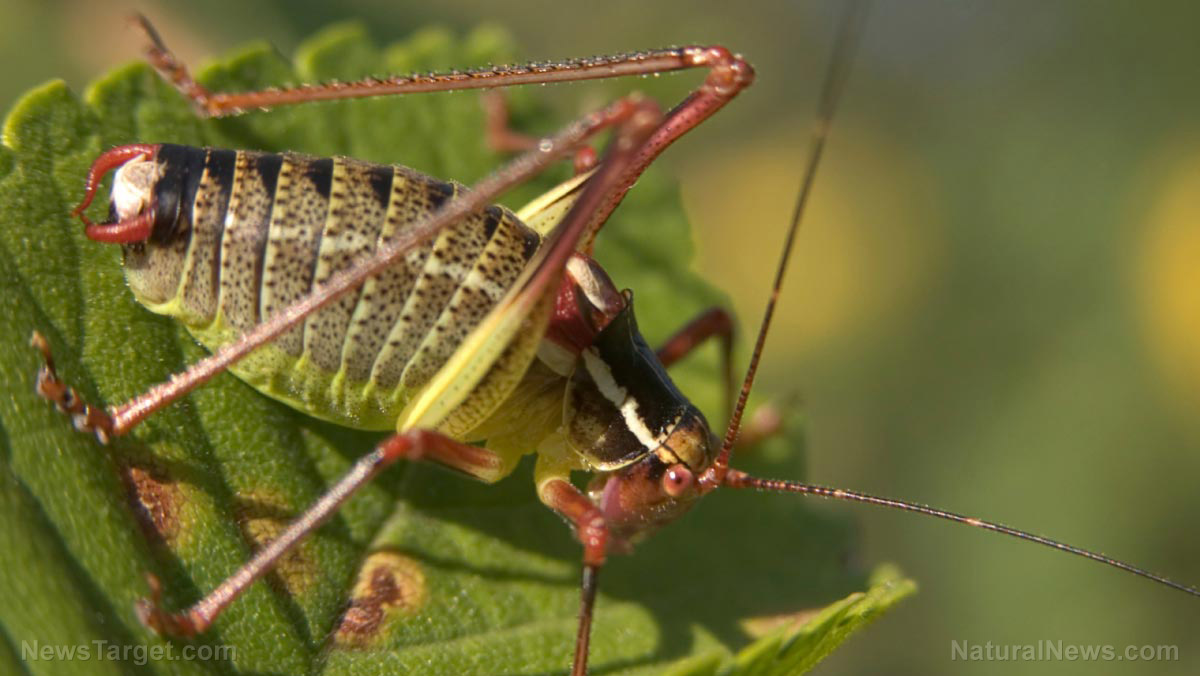Reconsidering your attitude: Surviving on an insect-based diet when SHTF
08/08/2018 / By Frances Bloomfield

The thought of eating bugs is enough to disgust almost anyone. But when you’re thrown into a crisis, they may be all you have. Let’s face it: There’s no guarantee that you’ll always have access to a steady stock of non-perishables. If and when that happens, will you just curl up and leave yourself to the elements? Or will you hunker down like a true survivalist and live off the land, even if it means subsisting on crickets and termites? If you picked the latter, then you’ve chosen wisely.
Insects: Gross but nutrient-dense
In terms of taste, insects just can’t hold a candle to a good old cheeseburger or steak. That much is true. But when it comes to their nutritional content, some bugs can be better than what you regularly eat. Take grasshoppers, for instance. A little over 3.5 ounces (oz) of raw grasshoppers can provide your body with 14 to 28 g of protein. For women, that’s at least 30 percent of your recommended daily value of protein, and at least 25 percent for men. Grasshoppers, as well as crickets, are known to contain small amounts of calcium, iron, and unsaturated fats as well.
Speaking of protein, grasshoppers aren’t the only insects packing this essential nutrient. As per HealthyEating.SFGate.com, 3.5 oz of red ants can serve up 14 g of protein, while the same-sized portions of giant water beetle and June beetle deliver about 20 g and 13 g of protein, respectively. Your average caterpillar has about 7 g of protein in 3.5 oz, but in turn, can fill you up with 13 mg of iron. Additionally, every 100 g of termites has about 14.4 g of protein and a decent amount of unsaturated fats.
Considering how abundant and common these animals are, your nutritional needs will be well met. And in a survival situation, nutrition trumps personal tastes. Plus, you can always treat yourself to something heartier and more appetizing once you’ve gotten yourself out of a crisis. Making it through is what’s most important, and if that means eating insects, then get ready to chow down. (Related: Basic nutrition for survival: 10 food items to keep in your emergency cache.)
What insects to eat and what to avoid
But just because you can make do with bugs doesn’t mean you should eat whatever you come across. Insects that are covered in fuzz or have bright colors should be avoided at all costs as they tend to be poisonous. Awful-smelling insects also fall under this category. Flies, mosquitoes, and ticks are absolute no-nos too as they spread disease. Some people will vouch for the safety of tarantulas, bees, and wasps, but it’s better to be safe than sorry and stick with the classics.
The “classics,” as per Survivopedia.com, are the insects you won’t usually give a second thought to. Grasshoppers, crickets, termites, beetles, ants, and termites are all good choices. In the event that you can’t scrounge up any of these bugs, then leeches, earthworms, cicadas, dragonflies, and even cockroaches will do in a pinch.
As for preparation, the other good thing about insects is that they can be eaten raw. But even if you “can” eat them raw, it’s still best to cook them to make them safer and tastier. Frying, boiling, roasting, and slow cooking are all ideal. Remember to take off the legs and wings to create a more appetizing meal. For added flavor, liberally season your insects with salt and pepper, or fry them up with butter or lard. The site Backpacker.com offers a more in-depth look at how to capture and prepare insects, should you want to become truly familiar with surviving off of insects.
If you’d like to brush up on more survival-related knowledge, then do consider visiting Preparedness.news today.
Sources include:
Tagged Under: emergency food, insects, insects as food, nutrition, preparedness, preparedness nutrition, prepper food, survival, survival and preparedness, survival food, survival nutrition


















